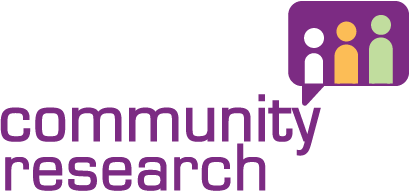Regulation and consumer protection
BIG questions
Where should the balance lie between protecting people from harm and enabling innovation?
What does professionalism mean in practice? What does it mean for behaviour outside of the workplace?
What do the public want from regulation?
How should a regulator balance protecting the needs of all consumers vs. focusing its efforts on protecting those who are more vulnerable to harm?
How can a regulator encourage consumers to ‘shop around’ in markets where competition has historically been lacking?
These are all questions we've grappled with in our work with the UK's leading regulators and consumer protection bodies. We’ve relished the challenge of bringing public, stakeholder and professional voices into our clients’ decision-making processes. Our work has supported clients in some of the following ways:
Exploring COMPLEX ISSUES
Many of our clients are keen to engage the public on complex, challenging and futuristic issues as these are the very dilemmas or trade-offs that might benefit most from consumers’ and citizens’ input. But, this can be challenging, as we may be asking people to think about issues they have simply never considered and they may have no experience to draw on. We have developed techniques (both online and offline) to inform and engage the public in meaningful debate. We have consistently found that, given the right tools, the public is able to deliberate at a very sophisticated level. We have engaged the public on topics as diverse (and as complex) as the following:
Remedies designed to increase engagement in the energy market (Ofgem)
Corporate strategy and investment priorities (The Legal Service Board)
Future energy market developments including, auto-switching, smart homes and artificial intelligence (Citizens Advice)
CONTINUous AND FLEXIBLE CONSUMER FEEDBACK
Many of our clients are interested in setting up a panel of consumers. Having a flexible research and engagement vehicle, such as a panel ensures that they have a convenient, responsive method for engaging with the public and hearing their voices directly at all levels of the organisation. Our approach provides the ultimate in flexibility and value for money whilst giving clients a continuous source of consumer feedback.
Understanding the landscape
Regulators and those protecting the public need to have a good feel of what is happening on the ground so that they can react to changing circumstances and anticipate future developments. For example, they need to understand behaviours which drive and prevent compliance and identify compliance with standards is challenging because of external factors. They also need to ensure that they understand the experiences of specific audiences (i.e. those living in vulnerable circumstances) so that they can shape policies and processes to their specific requirements.
Some examples include:
The factors that undermine and drive public trust in regulation and food, for the Food Standards Agency
How doctors are practising in a system that is ‘under pressure’ and the extent to which they are making compromises, for the General Medical Council (GMC)
MOVING ‘UPSTREAM’
Over recent years many regulators have focussed their efforts on upstream regulation i.e. redirecting their emphasis from enforcement to a strategy which attempts to prevent harm from occurring in the first place. This has meant greater engagement with those they regulate to better understand their experiences, as well as developing tools and resources to enhance their practice and/or professional development.
Some examples include:
Developing tools to enhance values based practise for the General Dental Council (GDC) and the General Osteopathic Council (GOsC)
Identifying positive examples of professionalism to be used as the basis for developing resources for the Health and Care Professions Council (HCPC) and the General Chiropractic Council (GCC) to support health professionals in future
Understanding public NEEDS and expectations
We have worked extensively with the general public to explore their views of regulation, regulators, standards and guidance and expectations of regulation and consumer protection. Levels of both expectations and complaints are rising, levels of trust are down and awareness of sources of information on concerns and complaints remains low. Regulators need to ensure that their policies and strategies are in tune with public expectations.
Some examples include:
Understanding public expectations about what should happen to regulated professionals when regulations are breached, for the GMC and other professional regulators
Testing communications with public and service users, for the HCPC
complaints and fitness to practise processes
Some of our work for regulators relates to when things have gone wrong. We are mindful that regulators need to ensure that complaints processes are streamlined; that there are no barriers in the way of registrants raising concerns but that less serious complaints are directed to more appropriate organisations. Our work in this area has involved:
Exploring consumers’ ideas about an ideal complaints processes for the Gambling Commission
Research with registrants on raising concerns and the Duty of Candour for both the GOsC and the GDC
Work to refine Fitness to Practise processes for the GMC and the GDC












